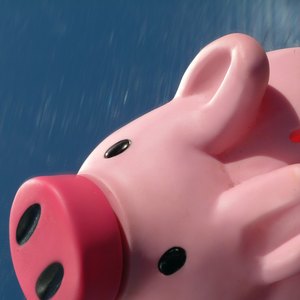
"Purchase APR" on your credit card statement tells you the rate of interest the card issuer is charging you when you buy things with your card. Because of something called compound interest, the interest rate you actually pay could be higher than the stated purchase APR. Then again, there's usually a way to avoid paying any interest at all on purchases with your card.
Tips
Your Purchase APR represents the amount of interest that will be charged to you when you use your credit card to make a purchase. If you pay off your credit card balance each month, the chances are good that you will never have to pay this interest.
What Is APR?
The abbreviation APR stands for "annual percentage rate." If your credit card has a purchase APR of 15 percent, for example, then you will be charged interest on purchases at a rate of 15 percent a year. Credit cards commonly apply different rates to different portions of your balance, depending on what you used the card for. For example, your card might charge 15 percent on purchases – the stuff you buy with the card – but 20 percent on cash advances and 5 percent on balances transferred from other cards.
Converting to Daily
Although interest rates are commonly expressed in annual terms, they aren't charged just once a year. Most cards charge you interest every day, based on that day's balance. The daily interest rate is simply your APR divided by 365, the number of days in a year. So if your purchase APR is 15 percent, the daily rate applied to purchases is about 0.0411 percent. If your card has a purchase balance of $150 on a given day, then you'd be charged about 6 cents in interest that day (actually 6.165 cents, which is 0.0411 percent of $150).
Compound Interest
Credit card interest is compound interest. That means the interest charges get added to your balance, usually once a month. The result is that you start getting charged interest on your previous interest. Say you carry a $150 balance for 30 days, racking up 6.165 cents in interest each day. At the end of the month, the total interest of $1.85 gets added to your balance, making it $151.85. Now you'll get charged 0.0411 percent of that larger amount each day. Because of compound interest, the actual interest rate you pay, known as the "effective annual rate," is higher than the APR. In this case, it would be about 16 percent.
Avoiding Interest Altogether
Most credit cards don't actually charge interest on new purchases unless you carry a balance from one month to the next. If you pay your balance in full every month, then it doesn't really matter what your purchase APR is, because you'll never accrue interest on purchases. Say you buy a new pair of shoes for $100. At a 15 percent purchase APR, you'll be accumulating interest charges of about 4 cents a day. But if you pay the whole balance the next time your bill comes, that interest won't be charged to your account. It just kind of disappears. If you don't pay the full balance, though, that interest will compound on whatever amount you didn't pay.
References
- Bankrate: 6 Facts About Credit Card APR
- Consumer Financial Protection Bureau: What Does APR Mean?
- Ultimate Calculators: Effective Annual Rate Calculator
- Discover. "How Does My Credit Card Interest Work?" Accessed Nov. 2, 2020.
- Federal Trade Commission. "Credit, Debit, and Charge Cards." Accessed Nov. 2, 2020.
- Experian. "What Happens After a Balance Transfer?" Accessed Nov. 2, 2020.
Writer Bio
Cam Merritt is a writer and editor specializing in business, personal finance and home design. He has contributed to USA Today, The Des Moines Register and Better Homes and Gardens"publications. Merritt has a journalism degree from Drake University and is pursuing an MBA from the University of Iowa.

